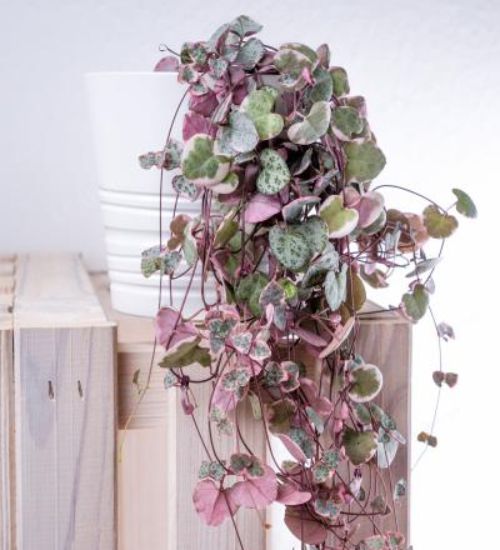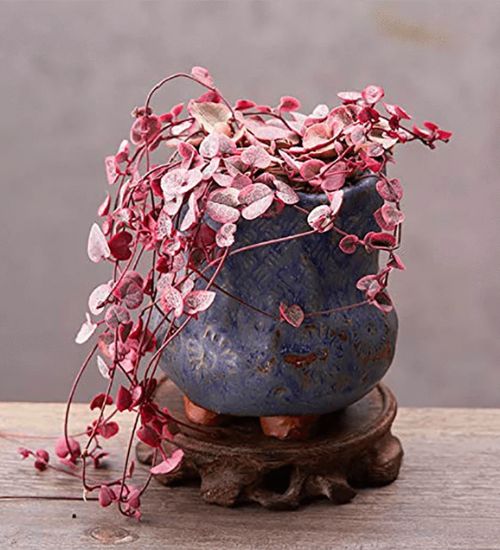Sun: Partial sun to partial shade
Water: Typical water needs for a succulent
Temperature: Zone 11a from 40° F to 45° F (4.4 ° C to 7.2° C)
Winter Survival: Not cold hardy
Propagation: stem cuttings, seeds, tuber
Flower: in the summer and fall
Flower Type:
Toxic: Generally non-toxic to humans and animals
Dormant: winter
Space Requirement: Indoors & Outdoors
Common Problems: Leaf diseases, pests
Where to buy Ceropegia woodii variegata?
Basc Care for Ceropegia woodii variegata
Watering
Regular watering period should be every 2 weeks
One simple tip for you is that you can use some online apps to check the soil status before you go water your succulents. I would recommend the ThePlantsCheck app, it has some nice features there.
Fertilizing
Only feed this succulent during its active growing seasons which means winter. Use the right fertilizer applied in the right amounts. Applying half-strength balanced fertilizer every month or so is recommended for optimal results.
Do not fertilize during winter as the plant is dormant.
Sun & Location Requirements for "String of Hearts"
To make sure your Ceropegia woodii variegata X thrives, it should be placed in an area that provides partial sun and shade. Aim for four to six hours of direct sunlight per day with some protection from the midday heat.
Ceropegia woodii variegata is not cold hardy and does not survive in freezing conditions. However, there are certain strategies that can be used to help the plant thrive despite the chill of winter. Proper drainage and insulation are essential for succulent X during periods of extreme cold. Placing a layer of mulch or gravel on the soil around the plant can also help keep it warm.
Any succulents in the group will need a medium space to grow. You can place your pot at your table or window. Since this plant needs more space than mini succulents, you should consider do not plant them together with other succulents/plants.
Propagation
One of the easiest and most popular ways to propagate Ceropegia woodii variegata is by stem cuttings. This method involves cutting a stem from an existing succulent and planting it in soil to grow a new plant.
Ceropegia woodii variegata can be propagated from seeds. Signs of a good seed is one that is plump, dark in color and slightly sticky. To propagate X from seed, one must prepare a soil mixture of well-draining potting mix, sow the seeds evenly and lightly press them into the surface. Lastly, gently water the soil using a spray bottle and place the container in bright but indirect light.
You can propagate Ceropegia woodii variegata by tuber. To do so, start by gently removing the existing plants from their pot or container and carefully examine the roots. Select healthy-looking tubers that have no signs of damage or rot to use for propagation.
Toxicity

Ceropegia woodii variegata is not known to pose any significant health risks, as it is not considered to be toxic. However, it is best to keep the plant away from young children and pets, as they may ingest some of the parts of this plant that could contain toxins which can cause mild skin irritation.
Pests and Diseases
Ceropegia woodii variegata can be affected common pests and diseases like most of the other succulents such as aphids, mealybugs, scale insects, and Red spider mites.
If you do spot any of pest signs, you can treat your succulent using below methods.
- Aphids: quarantine, clean infected plants, soapy water.
- Mealybugs: quarantine, clean infected plants, soapy water.
- Scale insects: quarantine, clean infected plants, soapy water.
- Red spider mites: Quarantine, clean your infected plants, treatment with a systemic insecticidal/soapy water.
Besides that, to prevent serious health issues from happening, keep your succulent in a well-ventilated area and check it regularly for any signs of pests or health problems.


